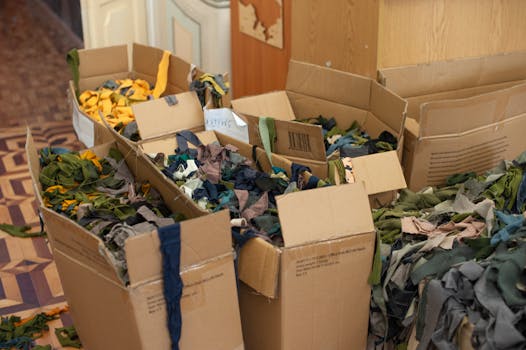The evolution of technology has brought significant changes across various fields, and crafting is no exception. From traditional handmade items to more sophisticated creations, digital tools are reshaping how artisans work. As crafting enthusiasts explore new possibilities, understanding the impact of these digital tools can enhance creativity and efficiency.
Crafting, once solely reliant on manual skills and traditional techniques, now incorporates digital innovations. With tools like 3D printing, laser cutting, and design software, artisans are unlocking new potentials. These technologies not only expand artistic boundaries but also streamline production processes.
This transformation fosters a vibrant community of makers and designers who blend artistry with technology. As crafters embrace digital tools, they experience a paradigm shift in creative expression. Let’s delve deeper into how these advancements are influencing the crafting landscape.
Introduction to Digital Crafting Tools
Digital crafting tools have introduced an array of options for creators. With programs and hardware tailored for various skill levels, accessibility has skyrocketed. Both novices and seasoned crafters can benefit from this digital shift.
Softwares like Adobe Illustrator and CorelDRAW allow artists to create intricate designs digitally. These programs enable precise control over every element. As a result, crafters can experiment freely without the constraints of traditional techniques.
Moreover, digital tools include cutting machines that accurately produce designs from the crafted files. Devices such as the Cricut or Silhouette make it easy to translate digital ideas into tangible products. This marriage of technology and craftsmanship opens doors to innovative projects.
Incorporating digital tools can also enhance collaboration among crafters. Online platforms and social media provide avenues for sharing designs and techniques. As a result, ideas circulate more rapidly, enriching the crafting community.
Thus, embracing digital tools significantly influences the creative process. Crafters no longer need to rely solely on physical resources. Instead, they can leverage technology to enhance their skills and broaden their artistic horizons.
Enhancing Creativity through Digital Design Software
Digital design software revolutionizes how artists conceptualize and create their work. With user-friendly interfaces, these tools provide a platform for creativity. Designers can visualize their ideas before committing to materials.
Software options vary from simple applications for beginners to advanced tools for professional artists. Whether using free platforms or subscription-based models, there’s something for everyone. Each tool allows for varying levels of detail and complexity, supporting diverse crafting styles.
Additionally, these programs often come with templates and design libraries, making it easy to get started. Crafters can customize these designs or use them as inspiration for unique creations. This flexibility encourages experimentation and exploration.
Furthermore, learning digital software expands crafting skill sets. Artisans familiar with technology can adapt more quickly to new trends. This adaptability can lead to increased marketability and a broader customer base.
Ultimately, digital design software fosters a culture of innovation among crafters. As creativity blends with technology, redefining traditional crafting methods becomes a reality. Through these tools, artists can push boundaries and redefine what craftsmanship means.
The Role of 3D Printing in Crafting
3D printing is a groundbreaking technology that has transformed crafting by allowing unprecedented customization. Artisans can create complex structures that were once impossible to achieve by hand. This capability opens new avenues for creativity.
With 3D printers, crafters can design and print prototypes quickly. This rapid production can significantly decrease the time between concept and final product. It allows makers to iterate on their designs with ease and efficiency.
Moreover, the wide range of materials usable in 3D printing expands crafting possibilities. From plastics to metals, artisans can experiment with different textures and finishes. This versatility enhances the variety of projects undertaken by artists.
3D printing also empowers crafters to develop functional objects alongside decorative items. Items like custom tools or unique home décor can be made. The ability to create bespoke solutions showcases the practical side of crafting.
As technology advances, the quality of 3D printed items will inevitably improve. This evolution will further push the limits of what is achievable through crafting. Embracing this technology equips artisans for a future that values innovation and individuality.
Laser Cutting: Precision and Efficiency
Laser cutting technology represents another significant advancement in the crafting industry. It allows for precise cuts and engravings that are difficult to replicate by hand. This accuracy can enhance both functionality and aesthetics in crafting projects.
Laser cutters work by using a high-powered laser to cut through various materials. These machines can process wood, acrylic, fabric, and more. The range of materials allows for creative expansion in different crafting disciplines.
Additionally, laser cutting can save makers considerable time. By automating the cutting process, crafters free up hours that can be spent on other creative aspects. This efficiency can significantly amplify productivity in crafting workshops.
The technology also supports intricate designs that may be otherwise limited to digital formats. Crafters can bring their most complex ideas to life with unmatched precision. This capability enables artisans to explore their creativity without limitations.
Ultimately, incorporating laser cutting into crafting offers advantages in accuracy and efficiency. As this technology becomes more accessible, its impact on the crafting community will continue to grow. This allows for an exciting evolution in creative expression and project execution.
Online Platforms for Crafting Communities
The rise of online platforms has significantly influenced the crafting landscape. Social media and crafting websites facilitate collaboration among artisans. These platforms provide spaces to share ideas, projects, and techniques globally.
Many crafters utilize platforms like Etsy to market their creations. This accessibility allows artisans to connect with customers seeking unique handcrafted items. The result is a vibrant marketplace that celebrates individuality and creativity.
Furthermore, these platforms often serve as educational resources. Creators can find tutorials, tips, and networking opportunities. This availability promotes skill development and helps newcomers navigate the crafting world.
Crafting communities foster support and encouragement. Experienced makers often mentor novices, sharing valuable insights. This spirit of collaboration strengthens relationships within the crafting ecosystem.
As these online platforms continue to evolve, the opportunities for crafters will expand. The potential for global connections and exchanges encourages innovation. This dynamic environment enriches the crafting experience for everyone involved.
Challenges of Integrating Digital Tools in Traditional Crafting
While digital tools offer numerous benefits, integrating them into traditional crafting can present challenges. Some artisans may resist adopting new technologies, fearing they compromise traditional techniques. This hesitation can hinder creative growth in the crafting community.
Moreover, the learning curve associated with digital tools can be daunting for some crafters. Mastering software or operating machines requires time and patience. For beginners, this may create barriers to entry into the crafting world.
Additionally, the cost of acquiring digital tools can be a significant factor. High-quality machines and software may require substantial investments. Hence, not all crafters can afford to adopt these technologies, leading to disparities within the community.
Furthermore, some artisans may find it challenging to maintain their distinctive style when utilizing digital tools. Balancing traditional aesthetics with modern methods can be nuanced and complex. Navigating this blend requires thoughtful consideration.
Despite these challenges, the rewards of embracing digital tools often outweigh the hurdles. The key lies in striking a harmonious balance between tradition and innovation. By doing so, crafters can enjoy the best of both worlds.
Conclusion: The Future of Crafting with Digital Tools
The integration of digital tools in crafting heralds a new era of creativity. As artisans harness technologies like 3D printing and laser cutting, possibilities seem endless. This fusion of tradition and innovation enriches the crafting landscape.
Ultimately, digital tools empower artisans to expand their skills, enhance productivity, and collaborate more effectively. The crafting community continues to thrive, driven by the excitement of new challenges and opportunities.
As crafters embrace these advancements, they cultivate a culture of creativity and innovation. The future of crafting holds promise, combining timeless skills with modern techniques. This synergy allows artists to express their unique visions like never before.
Embracing this technological revolution will redefine what it means to be a creator. In doing so, the crafting community will undoubtedly flourish in vibrant ways. Thus, artisans are encouraged to explore the digital realm and shape their creative destinies.


